In this comprehensive guide, we’ll explore the critical connection between your shoes and knee health, identify the key features to look for when shopping, and recommend the best shoes for knee pain across various categories. Whether you’re dealing with osteoarthritis, runner’s knee, or general joint discomfort, finding the proper footwear could be your first step toward significant relief.
The Connection Between Footwear and Knee Pain
Your knees experience forces equal to 1.5 times your body weight when walking and up to 4-5 times your body weight when running or jumping. Proper footwear works as a buffer between these forces and your joints, potentially reducing stress on your knees by 15-30% according to research published in the Journal of Biomechanics.
How Shoes Affect Your Biomechanics
Every step you take creates a chain reaction through your body. When your foot strikes the ground, the impact travels upward through your ankles, knees, hips, and spine. Shoes with proper cushioning, arch support, and stability features can help:
- Absorb shock that would otherwise travel to your knees
- Promote proper alignment of your feet, ankles, and legs
- Distribute pressure evenly across your foot
- Reduce excessive pronation or supination (inward or outward rolling of the foot)
- Provide stability that reduces lateral knee stress

Common Shoe-Related Issues That Worsen Knee Pain
- Worn-out cushioning: Shoes lose 30-50% of their shock-absorbing ability after 300-500 miles of use
- Improper arch support: Can lead to overpronation or supination, creating misalignment that stresses the knees
- Excessive heel-to-toe drop: High drops (>10mm) can increase pressure on the patellofemoral joint by up to 15%
- Inadequate stability: Allows excessive foot movement that can translate to knee strain
- Poor fit: Too tight or too loose shoes alter your natural gait, creating compensatory movements

Ready to Find Relief?
Don’t let knee pain limit your mobility. The right shoes can make a significant difference in your comfort and joint health.
Key Features to Look for in Shoes for Knee Pain
Cushioning
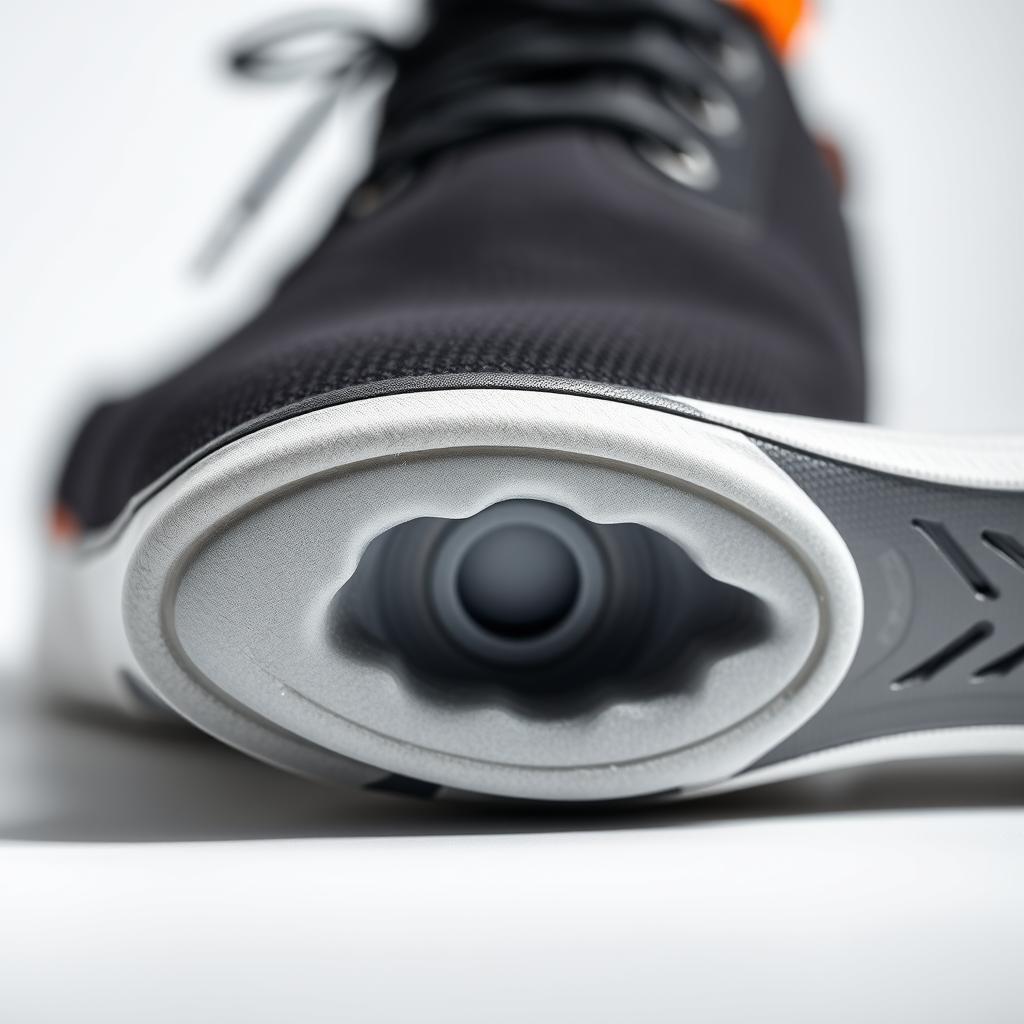
Adequate cushioning absorbs impact forces that would otherwise travel to your knees. Look for EVA foam, polyurethane, or proprietary cushioning technologies like Hoka’s compression-molded EVA or Brooks’ DNA LOFT.
Arch Support
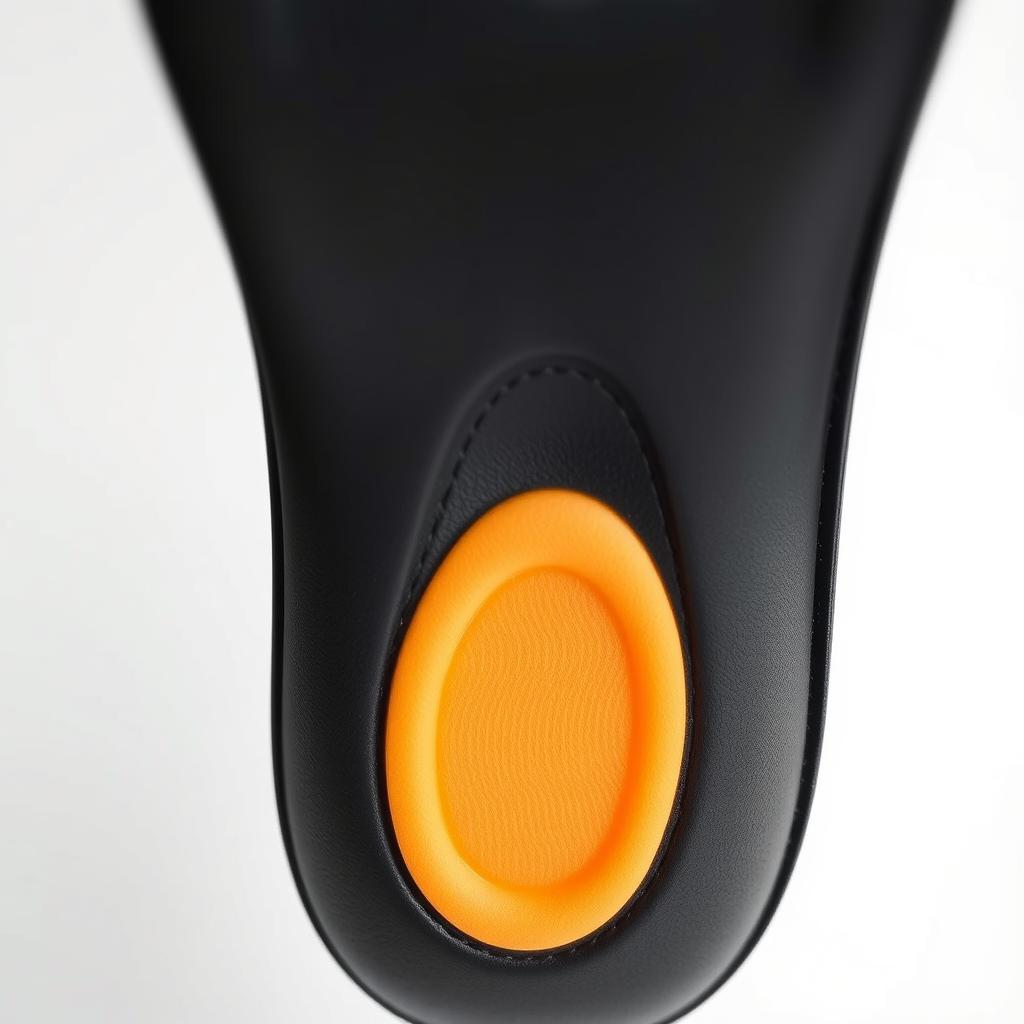
Proper arch support maintains correct foot alignment and prevents excessive pronation or supination. The support should match your arch type (high, neutral, or flat).
Stability Features

Stability features like medial posts, guide rails, or structured heel counters help control excessive foot motion that can stress the knees.
Understanding Heel-to-Toe Drop
Heel-to-toe drop refers to the height difference between the heel and forefoot of a shoe. Research suggests that a lower drop (0-8mm) may reduce knee stress for many people by promoting a more natural gait pattern and midfoot strike.
- High drop (8-12mm): Traditional design, may increase knee stress for some
- Medium drop (4-8mm): Good balance for most people with knee pain
- Low drop (0-4mm): May reduce knee stress but requires adaptation period
Note: If you’re used to high-drop shoes, transition gradually to lower drops to avoid calf strain or Achilles tendon issues.

Outsole Design and Flexibility
The outsole (bottom of the shoe) should provide adequate traction while allowing natural foot movement. A rocker sole design can reduce knee stress by promoting smoother transitions from heel to toe. The shoe should flex primarily at the ball of the foot, not in the middle.
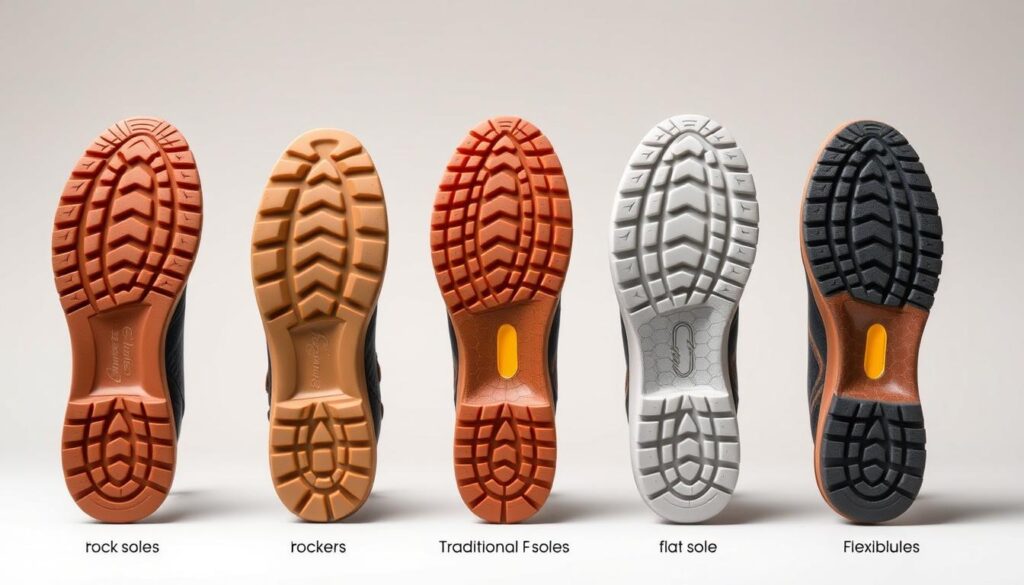
8 Best Shoes for Knee Pain in 2025
After consulting with orthopedic specialists, podiatrists, and analyzing feedback from thousands of users with knee pain, we’ve identified the top shoes across different categories that provide exceptional joint relief.
1. New Balance Fresh Foam X 1080v14
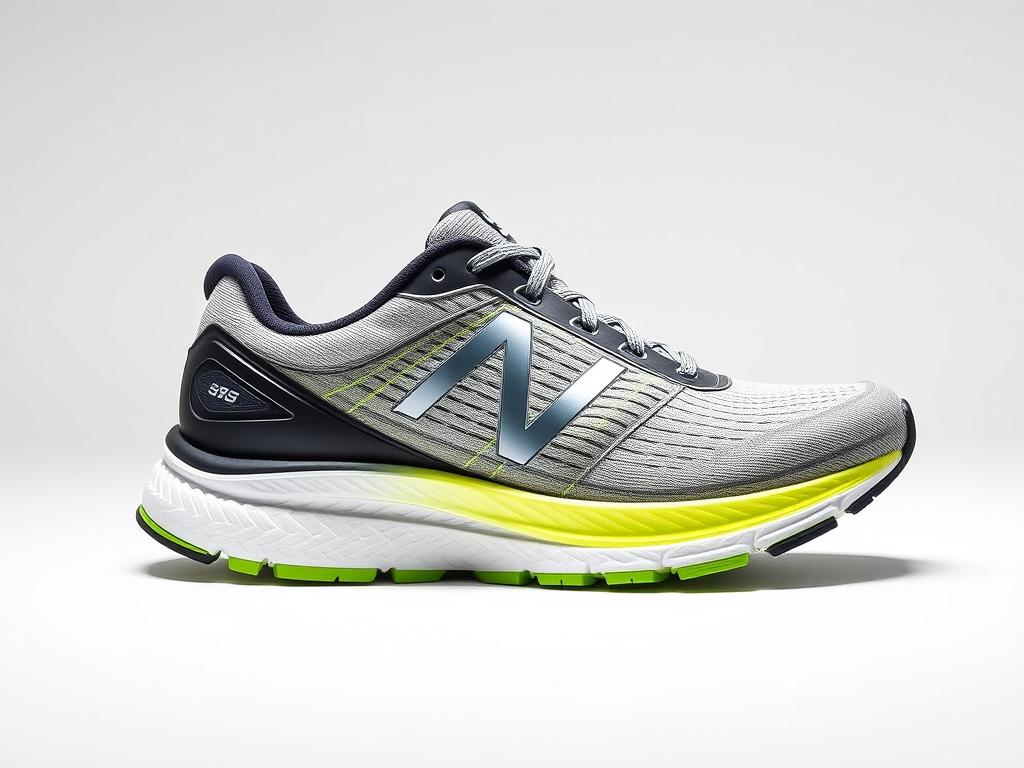
Key Features:
- Fresh Foam X midsole provides exceptional cushioning
- 6mm heel-to-toe drop balances comfort and natural gait
- Engineered knit upper offers breathable support
- Ultra-plush footbed with targeted pressure relief
- Available in multiple widths for proper fit
Pros
- Superior impact absorption
- Excellent for long walks and daily use
- Wide toe box prevents pressure points
- APMA (American Podiatric Medical Association) approved
Cons
- Premium price point
- May feel too plush for some users
- Slightly heavier than minimalist options
Best for: All-day comfort, walking, light running, and people with moderate to severe knee pain who need maximum cushioning.
User feedback: “After years of knee pain from osteoarthritis, these shoes have been life-changing. I can now walk for 30+ minutes without pain.” – Margaret T., verified purchaser
2. Hoka Bondi 9
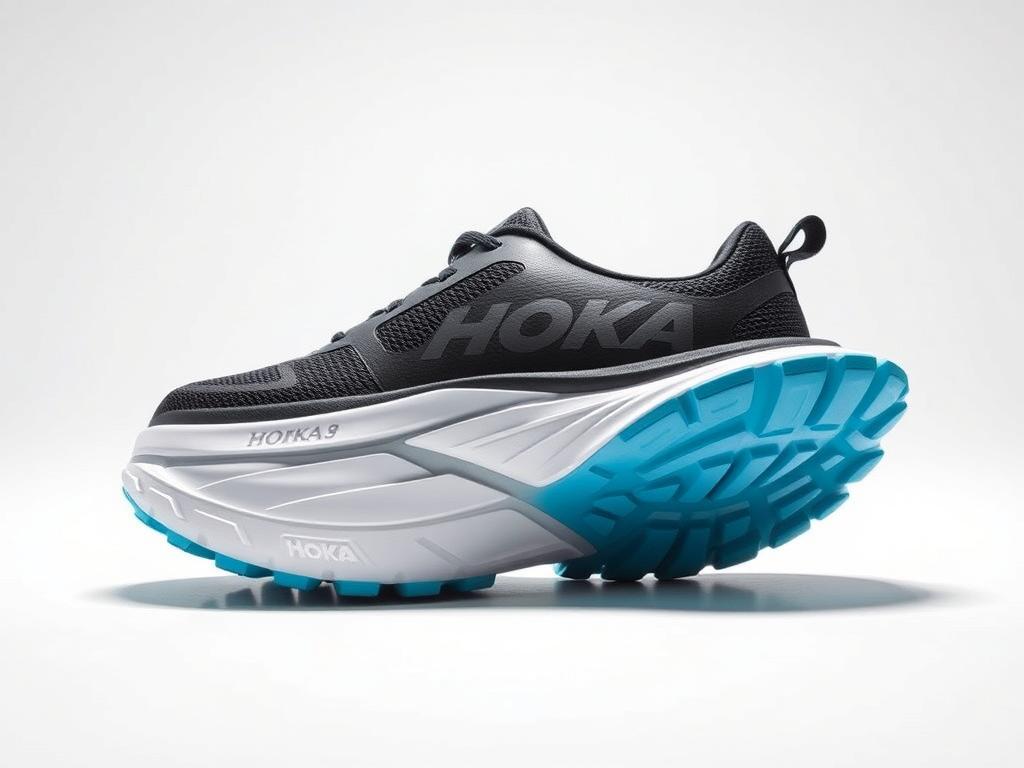
Key Features:
- Maximum cushioning with 31mm stack height
- Low 4mm heel-to-toe drop reduces knee stress
- Memory foam collar for secure heel fit
- Meta-Rocker technology promotes natural gait cycle
- Breathable engineered mesh upper
Pros
- Exceptional shock absorption
- Promotes midfoot strike that reduces knee impact
- Wide platform for stability
- APMA Seal of Acceptance
Cons
- Bulky appearance
- May feel unstable for some users
- Higher price point
Best for: Maximum cushioning needs, severe knee pain, long walks, and standing for extended periods.
User feedback: “These shoes have been a godsend for my arthritic knees. The cushioning is incredible, and I can now walk without wincing in pain.” – James R., verified purchaser
3. Brooks Adrenaline GTS 24

Key Features:
- GuideRails® holistic support system limits excess movement
- DNA LOFT cushioning provides soft feel without sacrificing durability
- Engineered mesh upper with 3D Fit Print for structure
- 12mm heel-to-toe drop supports heel strikers
- Available in multiple widths (narrow to extra-wide)
Pros
- Excellent motion control for overpronators
- Prevents knee rotation during stride
- Durable construction lasts 400-500 miles
- Accommodates custom orthotics
Cons
- Higher heel drop may not suit all knee conditions
- Slightly firmer feel than max-cushioned options
- Heavier than some alternatives
Best for: Overpronators, runners and walkers who need stability, and those with knee pain related to alignment issues.
User feedback: “The stability features in these shoes have dramatically reduced my knee pain. The GuideRails system keeps my feet from rolling inward, which has made all the difference.” – Robert M., verified purchaser
4. Asics Gel-Kayano 31
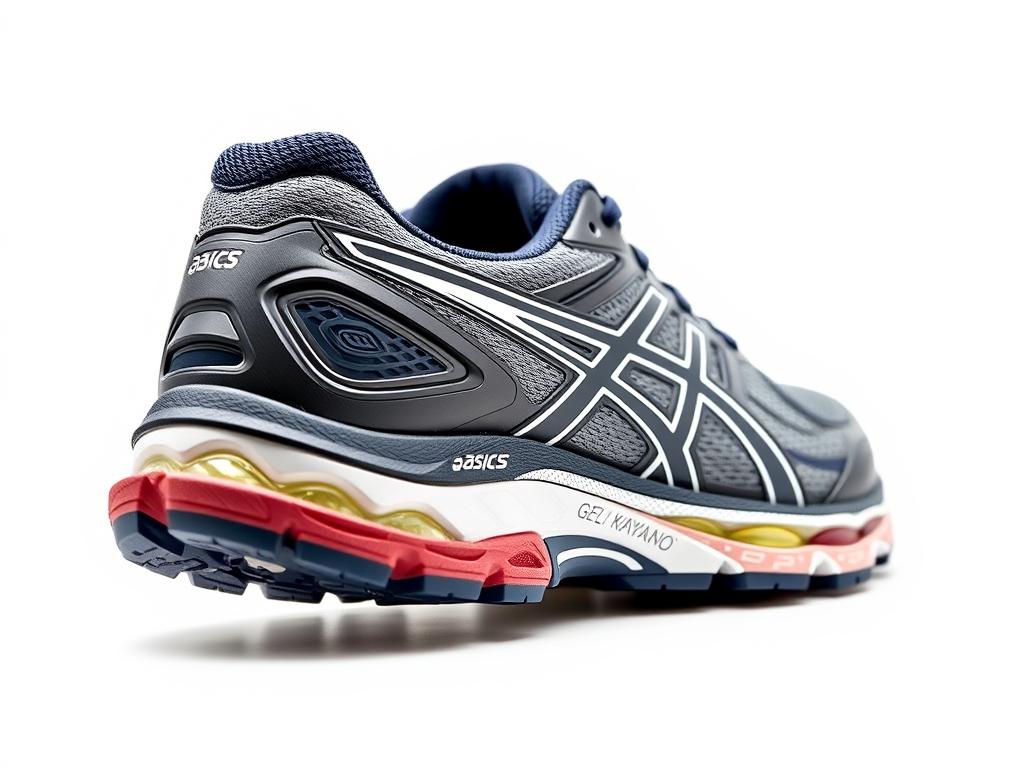
Key Features:
- GEL® technology cushioning in forefoot and rearfoot
- Dynamic DuoMax® Support System enhances stability
- FlyteFoam® Propel technology for enhanced bounce
- AHAR® (Asics High Abrasion Rubber) outsole for durability
- Gender-specific 3D SPACE CONSTRUCTION™ addresses different pressure patterns
Pros
- Superior impact absorption for runners
- Excellent stability for overpronators
- Responsive cushioning maintains energy return
- Durable construction for high mileage
Cons
- Premium price point
- Heavier than some running shoes
- May feel too structured for some users
Best for: Runners with knee pain, especially those who overpronate, and athletes who need a balance of cushioning and stability.
User feedback: “As a runner with patellofemoral pain syndrome, these shoes have allowed me to continue training without pain. The gel cushioning and stability features work together perfectly.” – Sarah K., verified purchaser
5. Skechers Max Cushioning Elite

Key Features:
- ULTRA GO® cushioning provides exceptional comfort
- Air-Cooled Goga Mat™ insole for added cushioning
- Lightweight, responsive design
- 6mm heel-to-toe drop balances comfort and natural gait
- Breathable athletic mesh upper
Pros
- Excellent value for the price
- Plush cushioning rivals premium brands
- Lightweight despite maximum cushioning
- Roomy toe box prevents pressure points
Cons
- Less stability than some options
- May not be as durable as premium models
- Limited color options
Best for: Budget-conscious shoppers who need maximum cushioning for knee pain relief during walking and daily activities.
User feedback: “I was skeptical about a less expensive shoe helping my knee arthritis, but these have been amazing. The cushioning is comparable to shoes twice the price.” – Thomas L., verified purchaser
6. Altra Provision 8
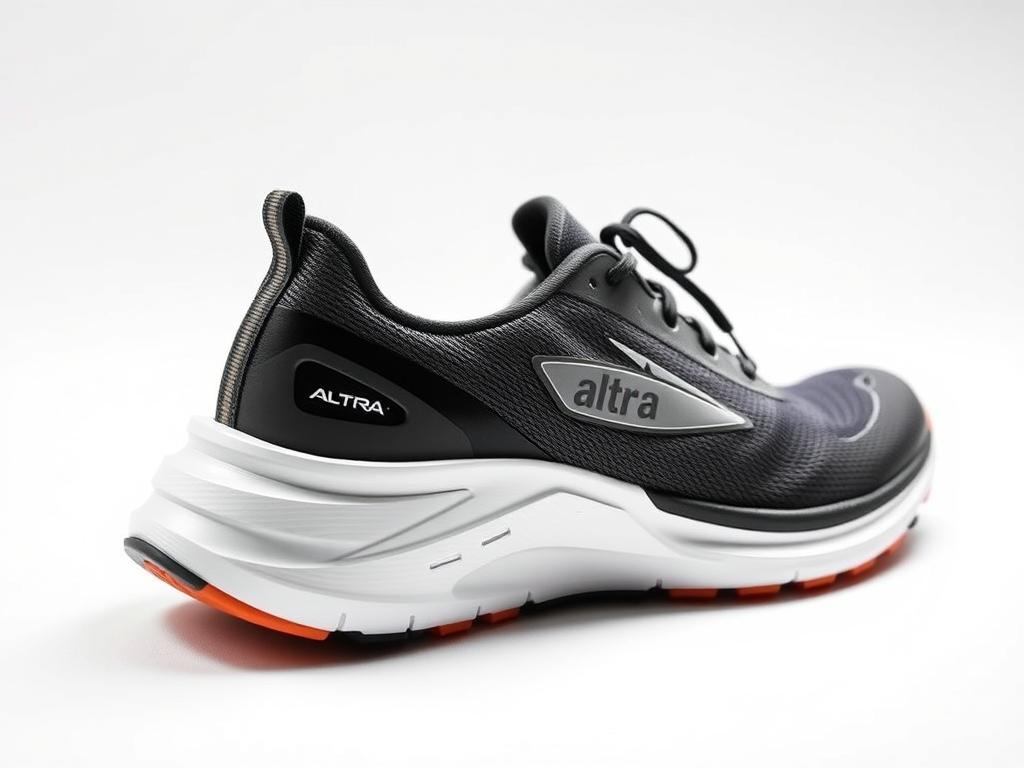
Key Features:
- Zero-drop platform (equal heel and forefoot height)
- FootShape™ toe box allows natural toe splay
- Innovative Guide Rail system for stability
- Balanced cushioning (28mm stack height)
- InnovArch™ technology connects to the laces for customized fit
Pros
- Promotes natural foot position and midfoot strike
- Wide toe box reduces pressure points
- Good balance of cushioning and ground feel
- Excellent for forefoot and midfoot strikers
Cons
- Requires adaptation period for those used to higher drops
- May increase calf strain initially
- Not ideal for severe overpronators
Best for: Those seeking a more natural running or walking experience who want to strengthen foot muscles while reducing knee stress.
User feedback: “After transitioning slowly to these zero-drop shoes, my knee pain has decreased significantly. The natural foot position has improved my overall alignment.” – Michelle T., verified purchaser
7. Orthofeet Coral Stretch Knit
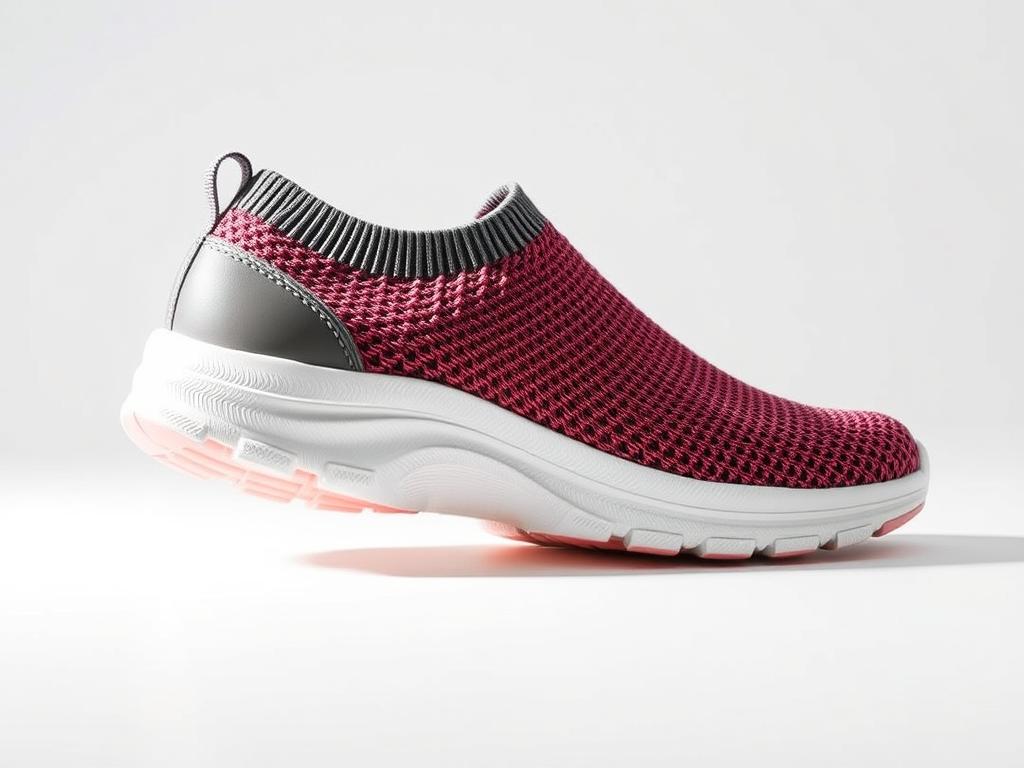
Key Features:
- Orthotic insoles with anatomical arch support
- Multiple cushioning layers with air pockets
- Ergonomic sole with mild rocker design
- Extra-depth design accommodates custom orthotics
- Seam-free interior lining eliminates pressure points
Pros
- Specifically designed for joint pain relief
- Excellent for arthritis and neuropathy
- Wide toe box prevents pressure points
- Adjustable fit with multiple width options
Cons
- Less stylish than mainstream options
- Heavier than athletic shoes
- Higher price point
Best for: Those with severe knee pain, arthritis, or who need therapeutic footwear with maximum support and cushioning.
User feedback: “These shoes have been a game-changer for my severe knee osteoarthritis. The orthotic support and cushioning have allowed me to walk without pain for the first time in years.” – Patricia G., verified purchaser
8. On Cloudmonster
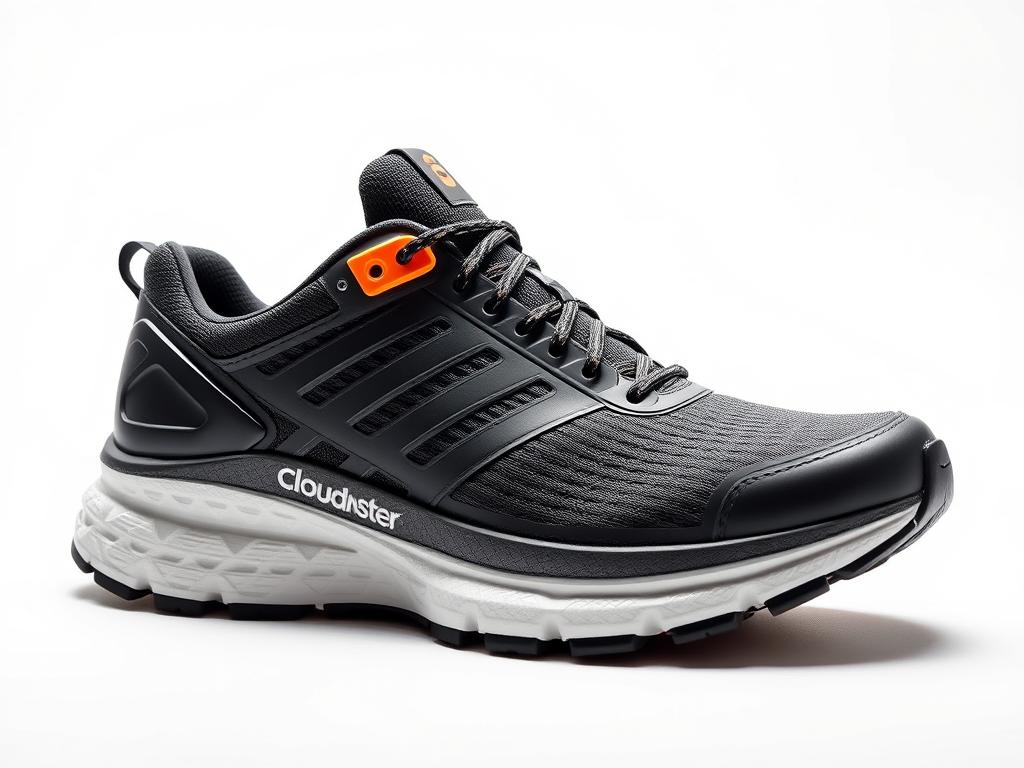
Key Features:
- CloudTec® cushioning pods provide targeted impact protection
- Helion™ superfoam for responsive cushioning
- 6mm heel-to-toe drop balances comfort and natural gait
- Speedboard® for energy return and propulsion
- Engineered mesh upper with strategic support
Pros
- Unique cushioning system absorbs impact
- Responsive feel for active individuals
- Lightweight design (8.8 oz)
- Stylish appearance for everyday wear
Cons
- Premium price point
- CloudTec pods can collect small stones
- Less stability than some options
Best for: Active individuals with knee pain who want a responsive, cushioned shoe that doesn’t sacrifice performance.
User feedback: “These shoes provide the perfect balance of cushioning and responsiveness. My knees feel protected, but I can still maintain my active lifestyle without feeling weighed down.” – Michael J., verified purchaser
Find Your Perfect Pair Today
Don’t let knee pain limit your mobility. The right shoes can make a significant difference in your comfort and joint health.
How to Choose the Right Shoes for Your Knee Pain
Understand Your Foot Type
Different foot arches require different types of support:
- High arches: Look for neutral shoes with extra cushioning
- Normal arches: Neutral shoes with moderate cushioning work well
- Flat feet/low arches: Stability shoes with motion control features
You can determine your arch type with a simple “wet test” – wet your foot and step on a piece of paper. The imprint will show if you have high, normal, or flat arches.
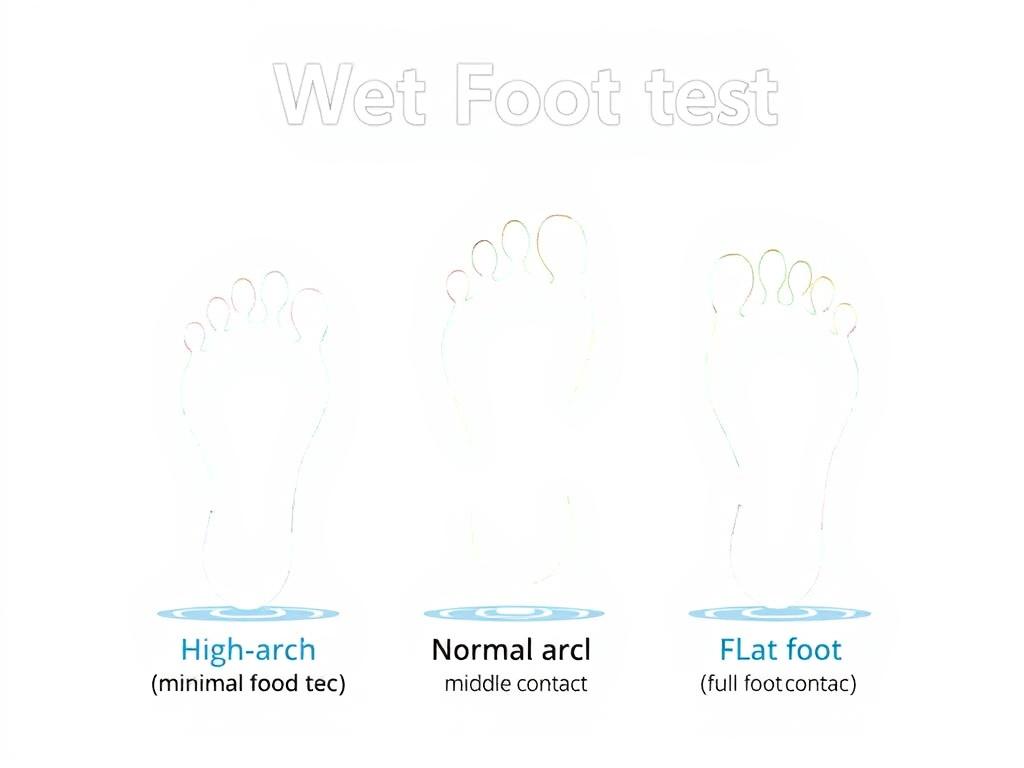
Try the Bend Test
A simple test to check if a shoe provides adequate support:
- Hold the shoe at both ends
- Try to bend it in half
- The shoe should bend primarily at the ball of the foot (where your toes bend naturally)
- If it bends in the middle or is too rigid to bend at all, it may not be ideal for knee pain

Consider Your Activity Level
| Activity Type | Recommended Features | Examples from Our List |
| Daily Walking | Balanced cushioning, arch support, wide toe box | New Balance Fresh Foam X 1080v14, Orthofeet Coral |
| Running | Impact protection, stability features, responsive cushioning | Asics Gel-Kayano 31, Brooks Adrenaline GTS 24 |
| Standing All Day | Maximum cushioning, arch support, rocker sole | Hoka Bondi 9, Skechers Max Cushioning Elite |
| Fitness/Cross-Training | Lateral stability, moderate cushioning, flexible forefoot | On Cloudmonster, Altra Provision 8 |
Lifestyle Tips for Knee Pain Management
- Replace shoes regularly: Most shoes lose 30-50% of their cushioning after 300-500 miles (about 6 months of regular use)
- Consider custom orthotics: For severe knee pain, custom insoles can provide targeted support
- Rotate between multiple pairs: This extends shoe life and provides different support patterns
- Gradually transition to new shoes: Alternate between old and new pairs for 1-2 weeks
- Wear appropriate shoes for each activity: Don’t use walking shoes for running or vice versa
“Shoes are like tires for your body. Just as you wouldn’t drive on worn-out tires, you shouldn’t walk on worn-out shoes – especially when your knees are at stake.”
Frequently Asked Questions About Shoes for Knee Pain
Can shoes really reduce knee pain?
Yes, research shows that proper footwear can reduce knee stress by 15-30%. Shoes with adequate cushioning, appropriate arch support, and stability features help absorb impact forces that would otherwise travel to your knees. A 2018 study in the Journal of Orthopaedic Research found that participants with knee osteoarthritis experienced significant pain reduction when wearing shoes with proper cushioning and support compared to their regular footwear.
How often should I replace my shoes for optimal joint health?
Most athletic and walking shoes should be replaced every 300-500 miles or every 6 months with regular use. Cushioning materials compress over time and lose 30-50% of their shock-absorbing ability, even if the shoes still look good externally. If you have knee pain, consider replacing shoes more frequently (every 300-400 miles) to ensure maximum support and cushioning.
Are sandals or flip-flops ever okay for people with knee pain?
Most standard flip-flops and fashion sandals provide inadequate support and can worsen knee pain. However, some orthopedic sandal brands (like Vionic, Birkenstock, or OOFOS) offer models with arch support, cushioning, and stability features that can be suitable for short periods. For extended walking or standing, closed shoes with proper support are still recommended.
What’s more important for knee pain: cushioning or stability?
Both are important, but their relative importance depends on your specific condition. For impact-related knee pain (like runner’s knee or osteoarthritis), cushioning is crucial to absorb shock. For alignment-related knee pain (caused by overpronation or supination), stability features are more important. Ideally, look for shoes that provide both adequate cushioning and appropriate stability for your foot type.
Should I use insoles or orthotics with my shoes for knee pain?
Over-the-counter insoles can enhance cushioning and support, potentially benefiting mild knee pain. For moderate to severe knee pain, custom orthotics prescribed by a podiatrist or orthopedic specialist may provide more targeted support. If using inserts, ensure your shoes have removable insoles and adequate depth to accommodate them without creating a tight fit.
Are zero-drop shoes good for knee pain?
Zero-drop shoes (where heel and forefoot are at equal height) can benefit some people with knee pain by promoting a more natural gait pattern and midfoot strike, which may reduce impact forces on the knees. However, they require a transition period and may initially increase calf and Achilles tendon strain. They’re not ideal for everyone, particularly those with Achilles issues or severe overpronation.
Conclusion: Taking Steps Toward Pain-Free Movement
Finding the right shoes for knee pain isn’t just about comfort—it’s about creating a foundation for healthier joint function and improved mobility. The proper footwear acts as your body’s first line of defense against the impact forces that can aggravate knee pain and accelerate joint wear.
Remember that while shoes are an important part of managing knee pain, they work best as part of a comprehensive approach that may include proper exercise, maintaining a healthy weight, and appropriate medical care. If you’re experiencing severe or persistent knee pain, consult with a healthcare professional for a proper diagnosis and treatment plan.
By investing in quality footwear with the right features for your specific needs—whether that’s maximum cushioning, stability control, or a more natural foot position—you’re taking a significant step toward more comfortable, pain-free movement. Your knees support you through countless steps each day; supporting them with the right shoes is one of the simplest yet most effective ways to maintain your mobility and quality of life.
Ready to Walk Without Pain?
Don’t let knee pain hold you back from the activities you love. The right shoes can make all the difference.
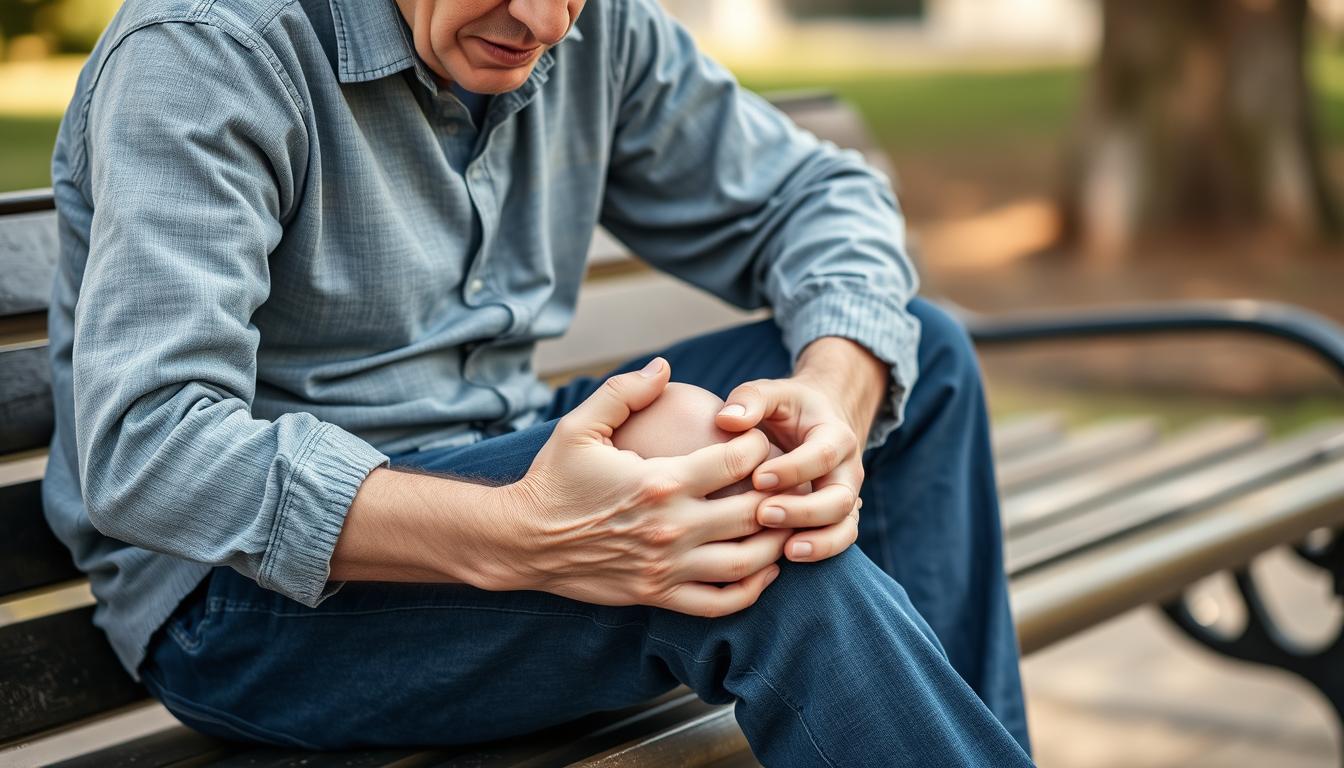
Leave a Reply